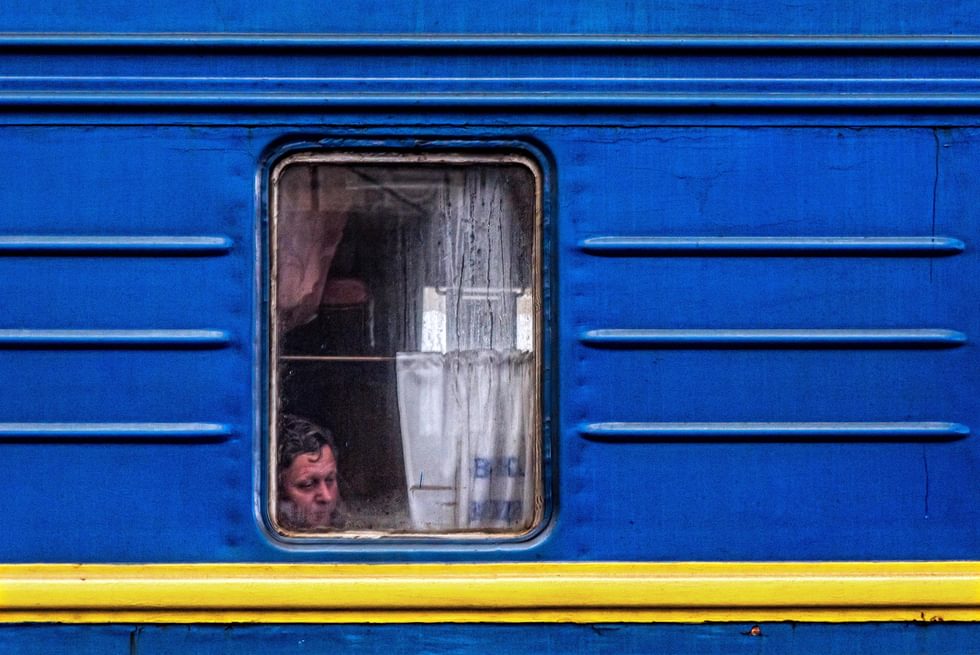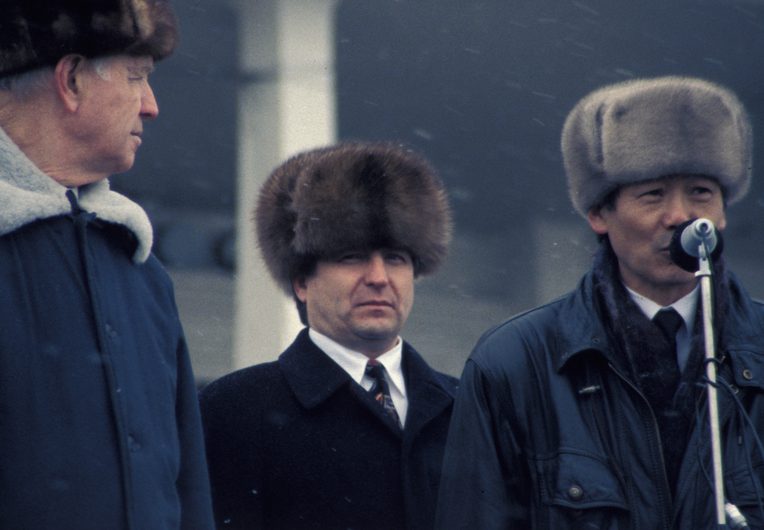Putin’s Long Game
From the Series: Russia’s War in Ukraine, Continued
From the Series: Russia’s War in Ukraine, Continued

Is the West to blame for Putin’s war on Ukraine? This question is being debated on the opinion pages of global newspapers and in the furious churn of Twitter posts, and anthropologists have weighed in as well. A leading figure in the anthropology of Eastern Europe, Chris Hann (2022), has joined other pundits in blaming the West for triggering Russian aggression by pushing NATO too far into its sphere of influence; he laments that “there is little or no attempt to representation of the Russian perspective” (Hann 2022). Hann, by his own admission, is not writing as an anthropologist; he prefers to seek “tools for comparative analysis at the macro level.” Indeed, no one thinking like an anthropologist would allow the slip of invoking a unitary “Russian perspective.”
Unfortunately, Hann has no first-hand experience in the study of Russia, and his macroanalysis is fixed on the histories of the external margins of Russia. He argues that “anthropological case studies are unlikely to help” (Hann 2022). But if the West can be blamed for anything, it is for ignoring instructive case studies in Russia and looking the other way during the long season as Putin prepared for this moment.
Putin’s campaign into the heart of Kyivan Rus’ has many complex motivations, but it is harder to make sense of them without consideration of the way Putin busied himself at the opposite end of the Russian Empire during his early years in power. This story begins with Putin’s predecessor, Boris Yeltsin. In 1990, Yeltsin made a speech in Tatarstan in which he declared that all the various territorial formations within Russia should “take as much sovereignty as they can swallow” (Dunlop 1993, 62–65). Many Russian regions followed his advice; at the time, this was called the “Parade of Sovereignties.” Even the far northeast district of Chukotka, where I did my fieldwork, declared itself an independent republic.
This Parade of Sovereignties led to a sad end: a chaos of centripetal force that did not merely fling the regions away from central control but subjected them to the rule of self-proclaimed democratic governors who carried on the Soviet kleptocratic tradition with New-Russian flair. One of Putin’s first projects after his ascension to the Kremlin was to rein in those regions. Putin did not need to do this militarily, but there is continuity between Putin’s strategy in the 2000s and what he is doing in Ukraine today. First, he cleaned up inside the house, and once he had that in order, he started working on the perimeter: first Chechnya, then Georgia, then Crimea, now all of Ukraine.
Putin’s early housecleaning was accomplished partially through changing Russian law to recreate a federal system that empowered him to install his own puppet governors in those far-flung regions. There was a transition phase in which elections were held; however, elections are easily won by those who are tapped into the circles of power. Who won these early elections? Billionaire oligarchs, of course. I was doing fieldwork in Chuktoka during the period when Roman Abramovich was campaigning for governor in opposition to the incumbent, Aleksandr Nazarov, who was a corrupt client of the Moscow mayor, Yuri Luzhkov. Putin gained public popularity by declaring that the time for such openly corrupt leadership was past; he would restore order in the empire. I could find no critics of Putin among my interlocutors in Chukotka in the 2000s; they celebrated the return of order after the dark decade of the 1990s.

Abramovich had no interest in being effectively exiled to what he saw as the ass-end of Russia, and he tried to get out of it before his term as governor was up. He tested the waters in 2002 by announcing to a gathering of St. Petersburg university students from Chukotka that he did not plan to run for a second term and that he might not even finish his current term (Gray 2005, 217). Putin had other plans for him; Abramovich not only finished his term in Chukotka but served a second term as well. Putin’s methods were persuasive: he made an example of another billionaire, Mikhail Khodorkovsky, who was arrested in 2003, subjected to a drawn-out show trial, and jailed in a penal colony (Gessen 2012). The message was clear: carry out whatever I assign to you, or endure a similar fate.
I witnessed firsthand how Abramovich wandered bemusedly around Chuktoka in the early 2000s, playing his role as benevolent new-era governor. Abramovich was celebrated as a savior in Chukotka when he spent lavishly to have apartment blocks in Anadyr’ painted in cheerful colors and to have “cottages” built for Indigenous people in the remote tundra villages. He deployed his cousin, Ida Ruchina, to run a local charity for him called “Pole of Hope,” elbowing aside local charity organizations (Dzieciolowski 2006). Chukotka is where Abramovich began to cultivate his international persona as a charitable benefactor, providing the acceptable cover that Britain needed to welcome him into their circle. Londongrad was born in Chukotka.
The irony here, and my main point, is that motivation for Putin’s invasion of Ukraine came from deep within the empire—or rather, Putin’s own vision of empire. He worked at restoring that empire from the inside first, with the assistance of his oligarchs, always with an eye to restoring the periphery as well. He always knew that the full project would require military force, and he was never hesitant to use it—we should have always known this, but perhaps bombings in Chechnya and Georgia felt more thinkable than bombings so much closer to the heart of Europe. Yet it is all the same to Putin. In his view, it is all his, and he can do what he likes.
Western chauvinism is wrongheaded, but it does not bear the full responsibility for this war in Ukraine. NATO has always been more of an excuse for Putin than a threat, and it takes a certain naiveté to believe Putin’s ruse that NATO made him do it.
Dunlop, John B. 1993. The Rise of Russia and the Fall of the Soviet Empire. Princeton, NJ: Princeton University Press.
Dzieciolowski, Zygmunt. 2006. “Roman Abramovich’s Chukotka Project.” openDemocracy, September 13, 2006.
Gessen, Masha. 2012. “The Wrath of Putin.” Vanity Fair, March 2, 2012.
Gray, Patty A. 2005. The Predicament of Chukotka’s Indigenous Movement: Post-Soviet Activism in the Russian Far North. Cambridge: Cambridge University Press.
Hann, Chris. 2022. “The Agony of Ukraine.” FocaalBlog, March 11, 2022.